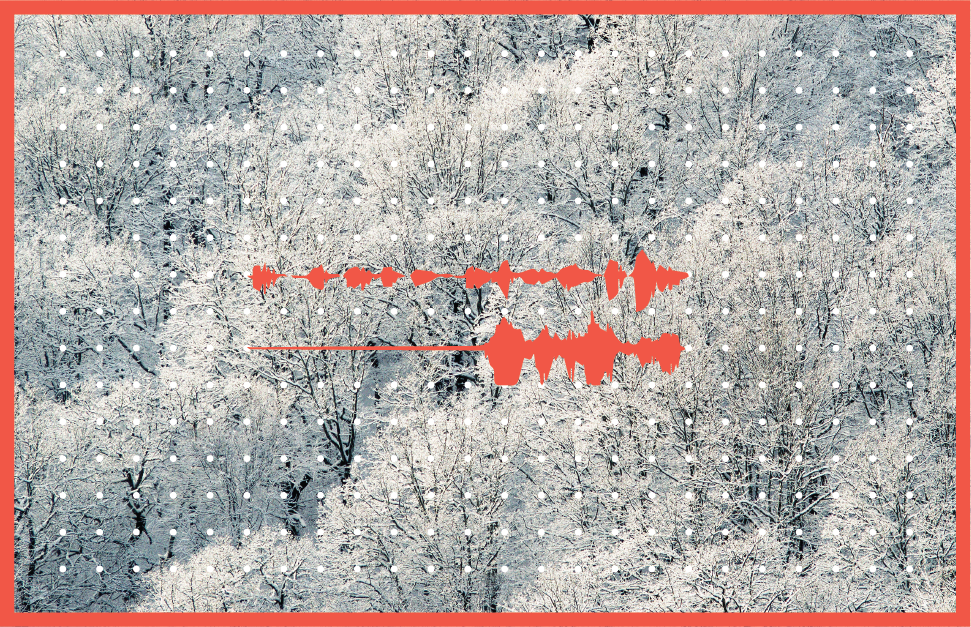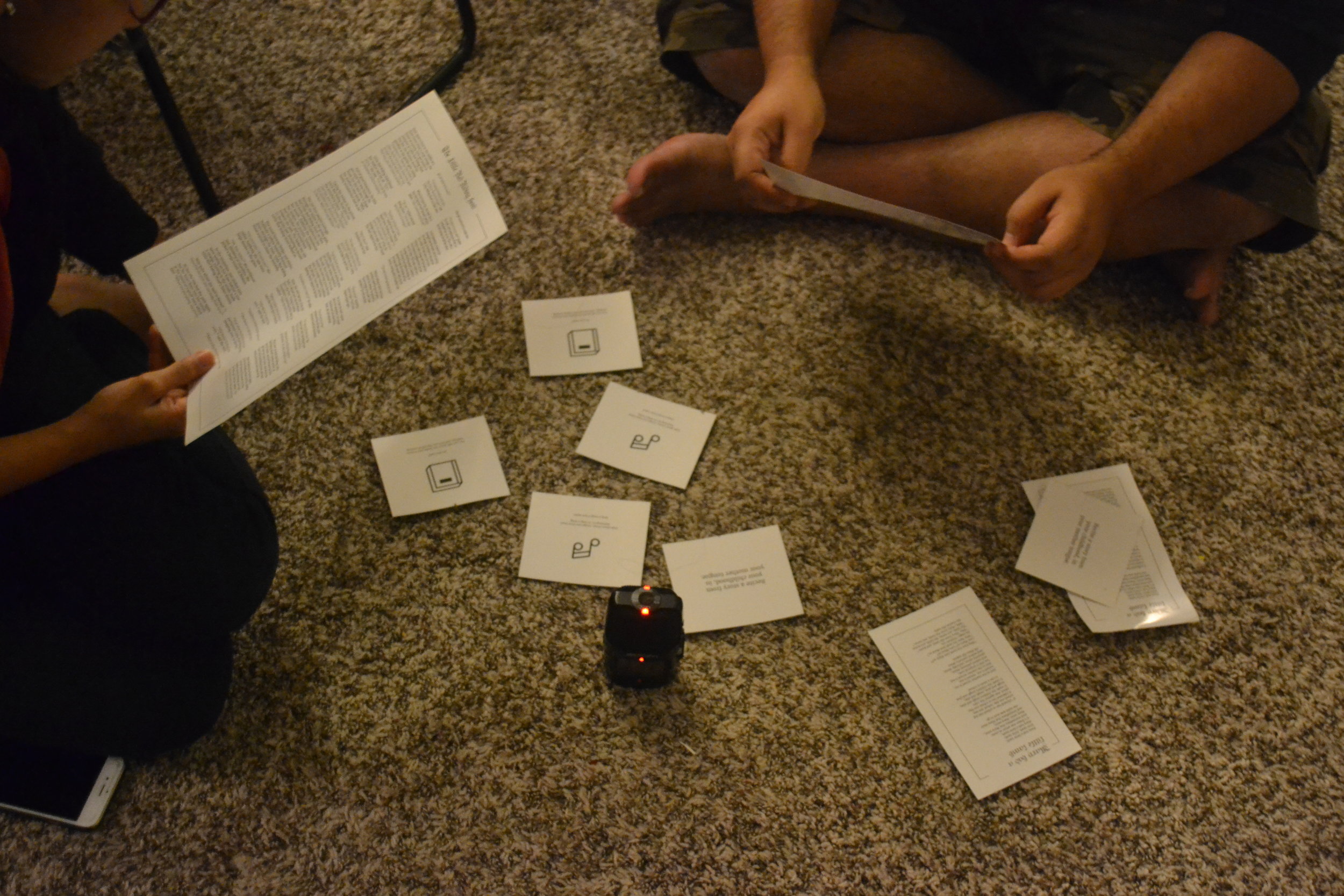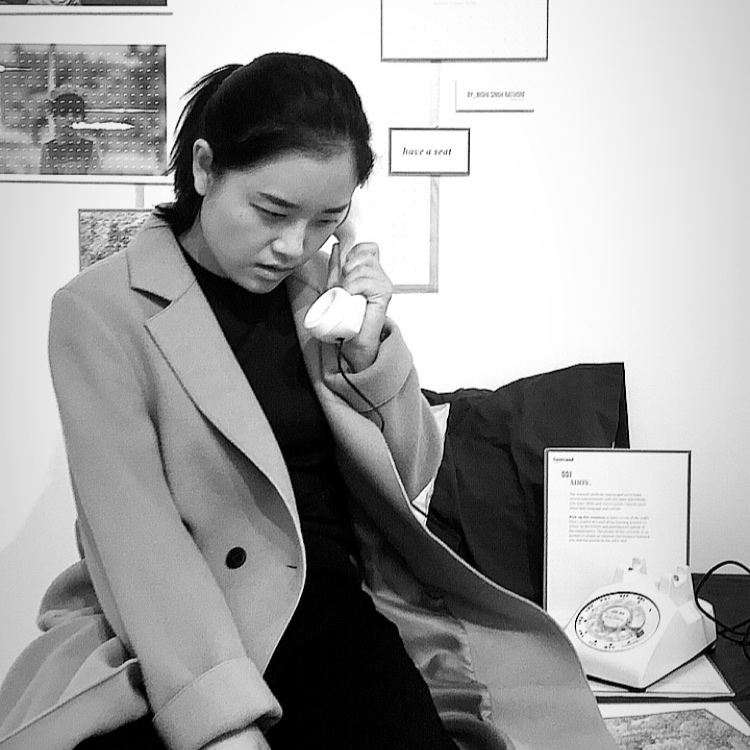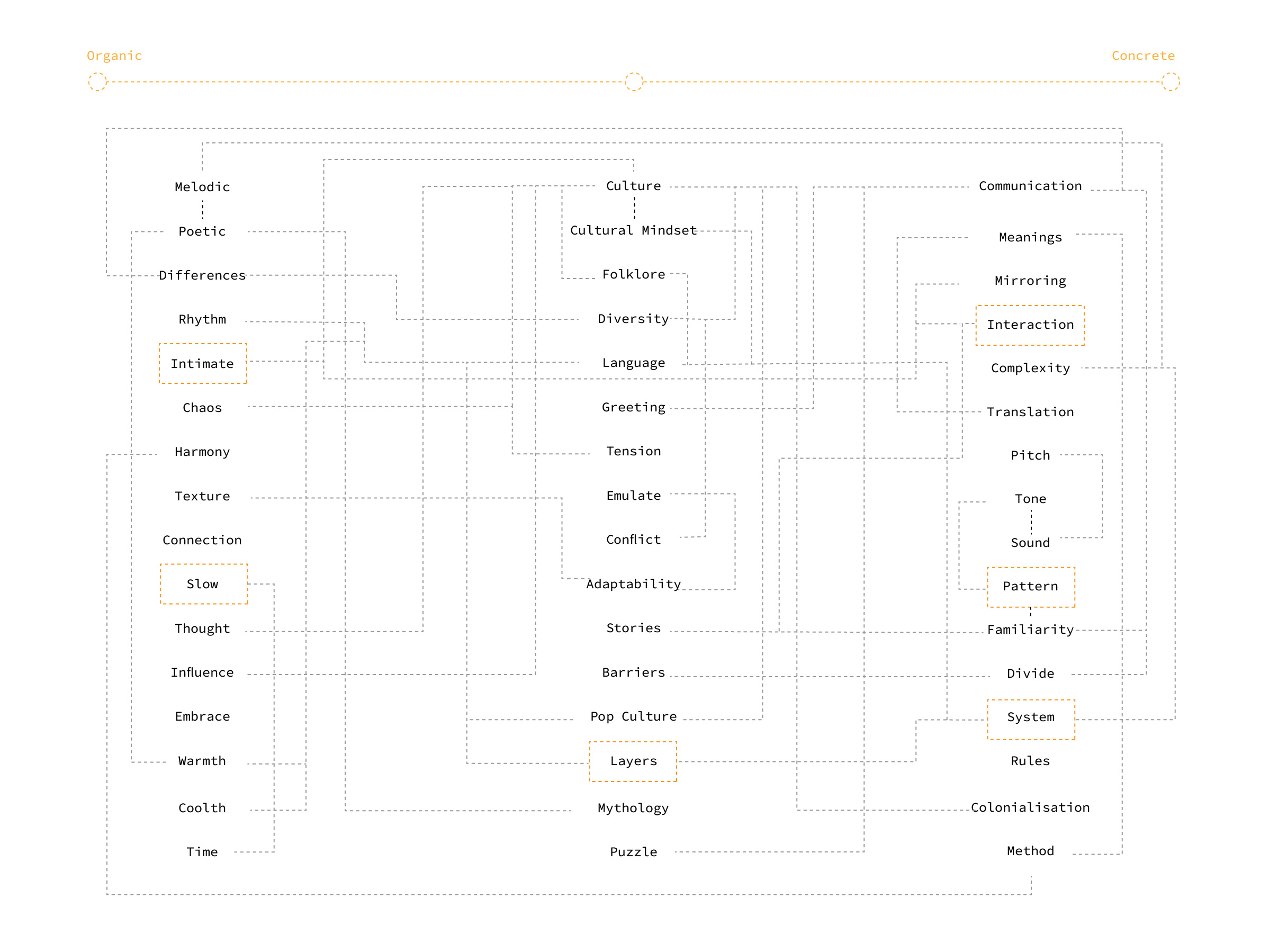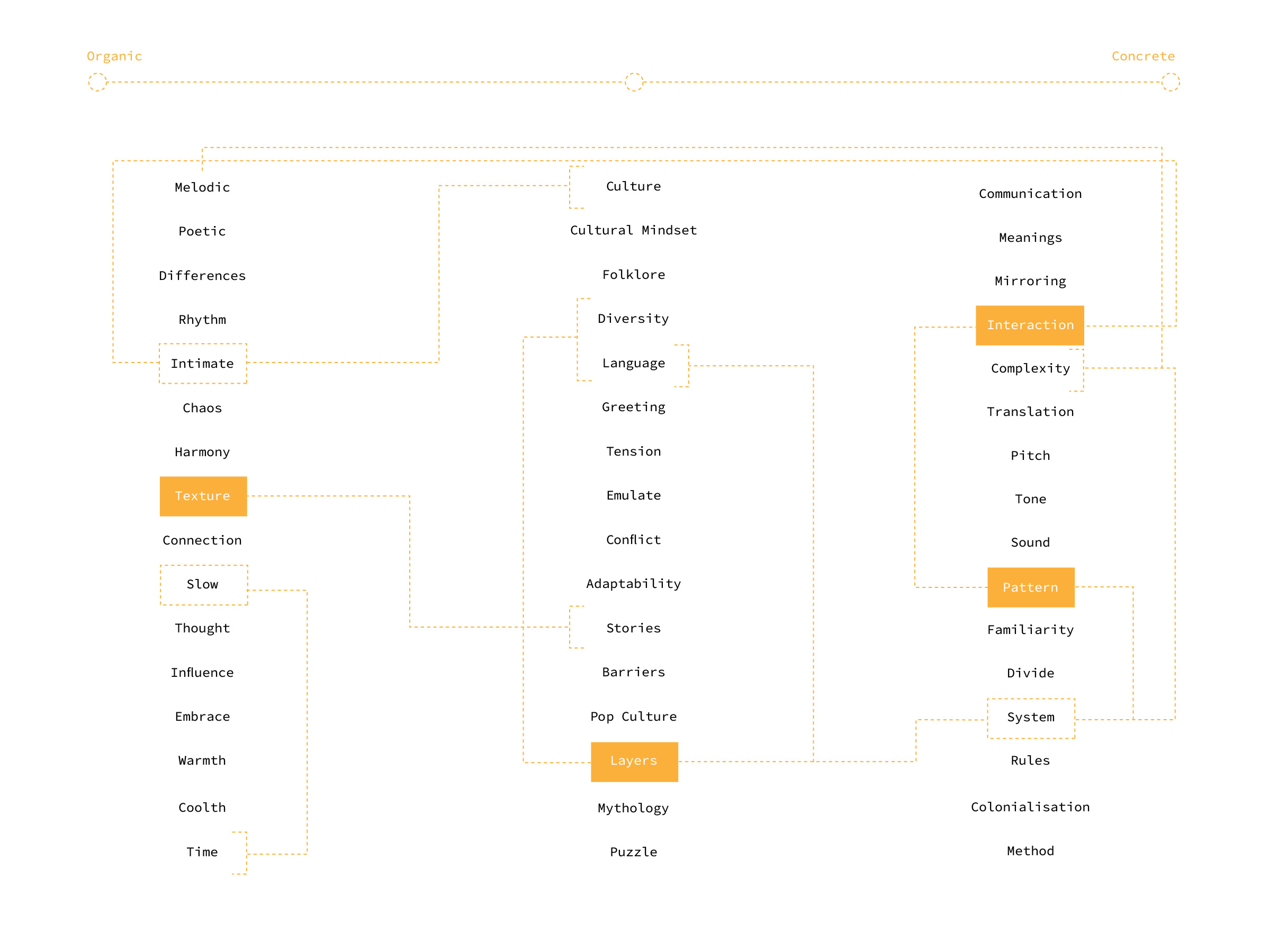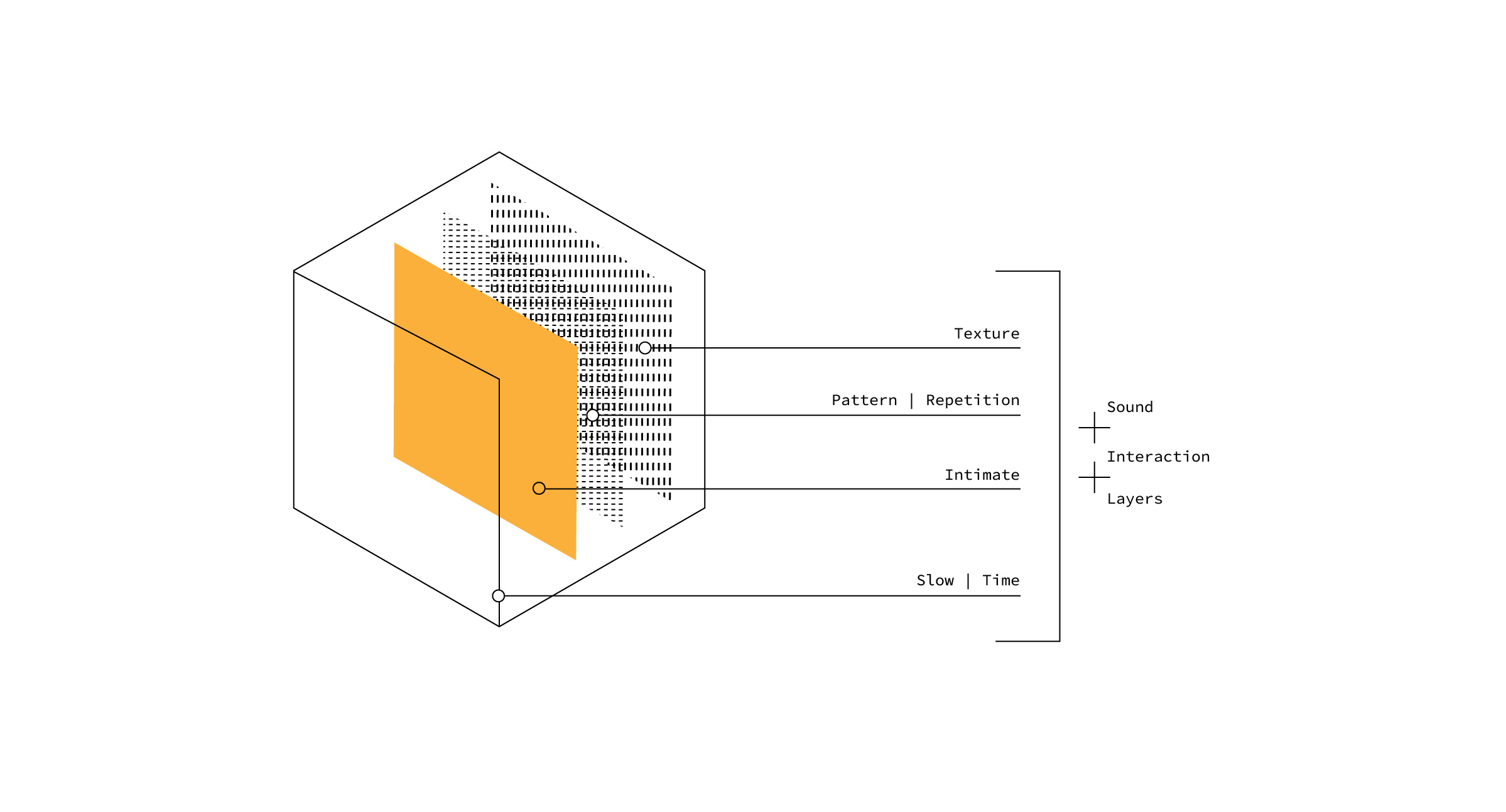Deconstructing Linguistic Sounds
This research project was an effort to understand how language is interpreted as sound, and goes beyond the spoken word that we chose to represent our thoughts in. As a researcher I developed interaction sessions where I could document and explore language as a multilayered interaction tool, and explore the underlying themes of rhythm, cross-cultural influences, and intimacy of dialogue created the guiding forces of the research trajectory.
projectsamvaad.com
Location
Los Angeles, ca, United States
role
DEsign ethnographer
The CHallenge
Use linguistic sounds to document languages through alternative methods and analyse the influence of languages on historical events.
How do lingual sounds play into our perceptions, culture, and history?
research trajectory
While this project was experimental in nature, with each week I redefined my question to get more critical and specific with time. I started with the question, How do individuals interact with each other when they don't understand each other's mother tongue?, which in the next week transformed in How is language interpreted as sound?
The process of this project was very individualistic, where I dedicated time and conversed with people to understand the influences of language in their culture and life.
I'd usually start with learning a phrase or word from my interviewee and repeat the words for some time. This often helped in breaking the ice between me and the individual, and helped us get through few vocal exercises. For the second step, the individual will repeat a word in their language 20-25 times, two to three times. This helped me understand the nuances of the language that get emphasised with each repetition. Lastly, we'll do a longer exercise where the individual will talk in their mother tongue, or often read. After finishing these exercises, we talked about how people in their culture greet each other and how does everyday communication work back at home for them. Since language is a huge part of our everyday life and expression of culture, it was interesting to know how people express love, gratitude and other emotions.
For sound pieces head to, Soundcloud.
Concept
Every aspect of my final outputs was a manifestation of my learning through this project. Either used as a metaphor or presented as is, the displayed items were an effort to build an immersive experience for individuals to be a part of the display itself.
The interactive display is a juxtaposition of the various facets of the research which depict the nature of conversations, stories, and was encased in a setup that was a metaphor of the slow and intimate nature of the research.
001
Rotary Phone, 1965.
The phone was indicated as the first interactive detail, where I prompted individuals to pick up the receiver to hear one of the processed audio clips from the field research. This interaction device puts the individual in an intimate position with the recording, of the person who isn't in front of them.
002
Postal cards
The postal cards in the display incapsulated my findings and processed documentation, where it represented the multilayered characteristics of the languages. These postcards' visualisations were a way to interpret the information gathered during field research, and reimagined the depth of conversations on paper.
003
Bell & Howell Player and Recorder, 1981.
While working on this project I documented 15 languages from different parts of the world, and realised there’s so much more out there, to record, listen, and understand. The last device in the display was a cassette recorder that was used as a media input device where individuals could record and leave a message in their mother tongue for me to add to the repository.

